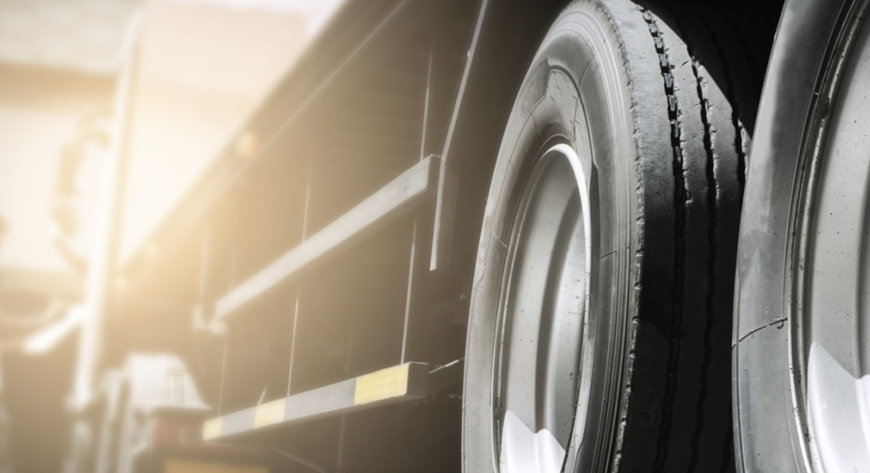www.auto-innovations.net
30
'23
Written on Modified on
CUMMINS News
CUMMINS SAFETY CONSIDERATIONS AROUND NATURAL GAS ENGINES AND VEHICLES
Safety is an absolute priority for engine and vehicle manufacturers, distribution and transportation companies, and end-users.

Natural gas engines and diesel engines have relatively similar architectures. The decades of knowledge Cummins Inc has accumulated designing internal combustion engines helps engineer safe, reliable natural gas engines. Thus, many common safety considerations are well-known and have well-documented solutions, such as the avoidance of pre-ignition events in the cylinder.
In some respects, natural gas is safer than liquid fuels. If a leak occurs inside the engine compartment, natural gas tends to dissipate at a faster rate while liquid fuels may coat engine parts or form puddles. Leaked diesel or gasoline can lead to fires, whereas natural gas is either already gone or present in concentrations so low it’s not conductive to ignition. In addition to natural gas, there are other alternative comparable fuels that have grown in popularity.
Natural Gas Vehicles keep drivers safe
Compressed natural gas (CNG) vehicles store their fuel in sturdy gas cylinders under high pressures. High storage pressures enable storage of more fuel in the same cylinder, extending the range of the vehicle. These cylinders are critical for the safety of the vehicle and are subject to stringent design standards and safety margins. Compressed Natural Gas (CNG) cylinders are typically rated to store gas at up to 3,600 psi. They are also required to feature pressure relief valves, which release some gas to reduce pressure when abnormal conditions occur. Other critical safety components include a pressure regulator and a shut off valve. A pressure regulator monitors the pressure of the natural gas reaching the engine. The main shut off valve allows isolation of the fuel system from the engine. These components are thoroughly verified and tested to ensure the safety of the vehicles incorporating them. Cummins has formed a new joint venture called Cummins Clean Fuel Technologies to provide natural gas storage tanks.
Natural gas is lighter than air and can dissipate into the atmosphere. To avoid severe damage in the tanks, most fuel delivery systems are designed robustly in case vehicle accidents take place. CNG tanks must pass acid exposure and drop tests in horizontal, vertical and 45-degree angles. They also must pass a penetration test that requires them to be shot with a rifle without resulting tank ruptures. Finally, all CNG cylinders must be tested and certified to a continuous operating temperature range of -40⁰F to 185⁰F.
It is important for natural gas fuel systems to be leak-free. Periodic inspections and maintenance are essential to avoid leakage. The gross vehicle weight rating (GVWR) determines tanks’ maintenance intervals. If the number is greater than 10,000 lbs., inspection takes place at least every 12 months. Then, if GVWR is lesser or equal to 10,000 lbs., the inspection interval is three years (36 months) or every 36,000 miles. CNG cylinders have a limited useful life of 15 to 20 years and do not requalify for use beyond their useful life.
These are some of the many best practices listed in safety standards such as the National Fire Protection Association 52 standard. Tank manufacturers also provide instructions to prevent cylinder damage. Some of these instructions include not dragging or walking on the cylinders and protecting the valves, fittings, and piping when transporting them.
Top 5 Safety Design Elements for CNG Maintenance Facilities
CNG is mostly methane (CH4) with slight amounts of other hydrocarbons. Its lighter than air, so in the event of a release, it will rise to the ceiling of the maintenance facility and quickly dissipate rather than pooling at or near floor level like liquid fuel vapors. If concentrations of 5% - 15% by volume of natural gas encounter an ignition source, the gas may ignite, with potentially serious results. However, according to the U.S. Department of Energy, due to natural gas’s ability to rapidly dissipate, this concentration is rarely seen in practice. That said, to prevent potential safety hazards, facilities that service natural gas vehicles require specific safety measures.
- Ventilation must provide sufficient air flow to reduce the concentration of any released gas and at the same time evacuate gas from the structure.
- Paths of migration must be controlled to prevent any released gas from entering unprotected areas of the structure.
- Space heating must be designed in accordance with guidelines so that open flames or hot surfaces don’t provide an ignition source.
- Electrical wiring and equipment must be installed in such a way that they don’t provide ignition due to sparking. The equipment itself can be designed to be “explosion-proof.”
- Methane detection and control systems and alarms must provide defense against dangerous concentrations of natural gas by alerting personnel in the building and disabling potential electrical ignition sources.
Local Clean Cities coordinators are an excellent resource for fleets and facility maintenance managers with questions about safety measures, or who need help accessing their facilities. Visit cleancities.energy.gov to find a local Clean Cities coordinator.
Ultimately, using natural gas in the transport industry can be a safe fuel. This is an addition to the many advantages of using natural gas engines. Therefore, natural gas vehicles are clean, safe and reliable thanks to the use of best practices and the incorporation of smart safety features.
www.cummins.com
Ultimately, using natural gas in the transport industry can be a safe fuel. This is an addition to the many advantages of using natural gas engines. Therefore, natural gas vehicles are clean, safe and reliable thanks to the use of best practices and the incorporation of smart safety features.
www.cummins.com

